Lesson summary
In this lesson, students will look beyond food producers to the wider community, to the networks and organisations that support and encourage sustainable food production in Australia. They will examine an organisation at a local, state and/or national scale and work in pairs to create an infographic about the aims/role of this organisation.
Learning intentions:
Students will...
- understand the role of food producers and individuals in creating a sustainable food future.
- Students will understand the importance of food networks and organisations such as NGOs in creating a sustainable food future.
Success criteria:
Students can...
- identify the separate roles of food producers, consumers and the wider community in a sustainable food future.
- work individually to research and communicate the findings of a geographical inquiry.
- communicate geographical information using a digital infographic creation tool.
Lesson guides and printables
Curriculum links
Select your curriculum from the options below.
Lesson details
Skills
This lesson is designed to build students’ competencies in the following skills:
- communication
- community engagement
- creativity
- critical thinking
- digital literacy
- social skills
Curriculum Mapping
Australian curriculum content descriptions:
Year 9 Geography:
- Challenges to food production, including land and water degradation, shortage of fresh water, competing land uses, and climate change, for Australia and other areas of the world (ACHGK063).
- The capacity of the world’s environments to sustainably feed the projected future global population (ACHGK064).
Year 10 Geography:
- Human-induced environmental changes that challenge sustainability (ACHGK070).
- Environmental world views of people and their implications for environmental management (ACHGK071).
- The application of systems thinking to understand the causes and likely consequences of the environmental change being investigated (ACHGK073).
Syllabus outcomes: GE5-2, GE5-3, GE5-4, GE5-5
General capabilities: Information and Communication Technology (ICT) Capability, Literacy, Critical and Creative Thinking
Cross-curriculum priority: Sustainability
Relevant parts of Year 9 achievement standards: Students analyse interconnections between people, places and environments and explain how these interconnections influence people, and change places and environments. Students analyse alternative strategies to a geographical challenge using environmental, social and economic criteria. Students synthesise data and information to draw reasoned conclusions.
Relevant parts of Year 10 achievement standards: Students explain how interactions between geographical processes at different scales change the characteristics of places. Students identify, analyse and explain significant interconnections between people, places and environments and explain changes that result from these interconnections and their consequences.
Unit of work: Love Food? Love Bees! – Food Security and Sustainability – Year 9 & 10
Level of teacher scaffolding: Medium – a modelled Inquiry is built into the lesson. Students may also need to be guided through the use of an infographic-created software.
UN Sustainable Development Goals
- Target 15.5: Take urgent and significant action to reduce the degradation of natural habitats, halt the loss of biodiversity and, by 2020, protect and prevent the extinction of threatened species.
Resources Required
- Student Worksheet – one copy per student
- A printed class set, or ability to project, the Infographic Assessment Rubric
- Enough internet enabled-devices to facilitate paired work and the use of the program, Piktochart
Additional Info
This lesson has been created in partnership with ACT for Bees. ACT for Bees is a not-for-profit organisation taking action to preserve these essential pollinators, ensuring a food-secure future.
Related Professional Learning
How To Teach Sustainability With Hope
Quick summary: This course is for both primary and secondary teachers of all subjects, but especially for English, Science, Humanities and Geography teachers who are covering climate change and the cross-curriculum priority of sustainability.
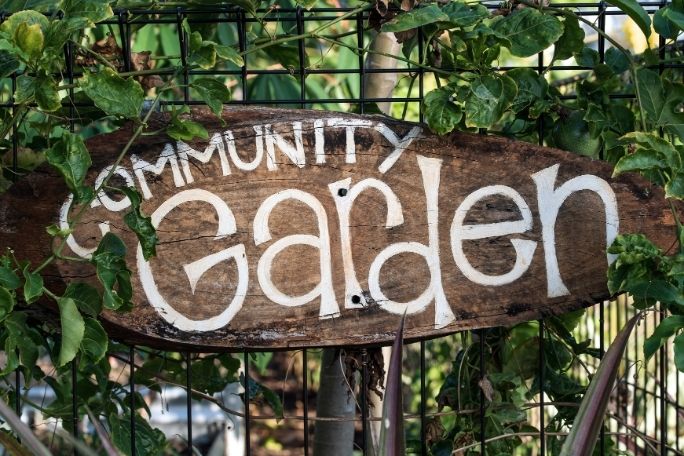
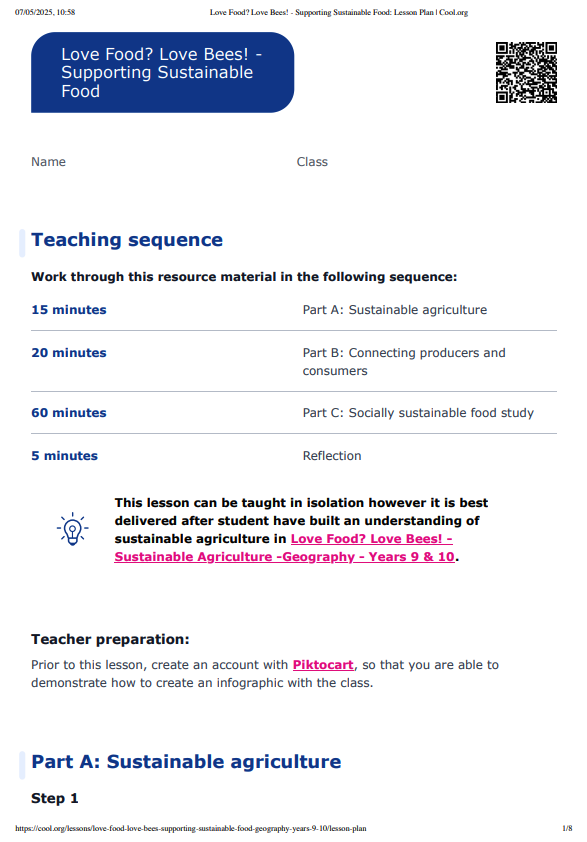
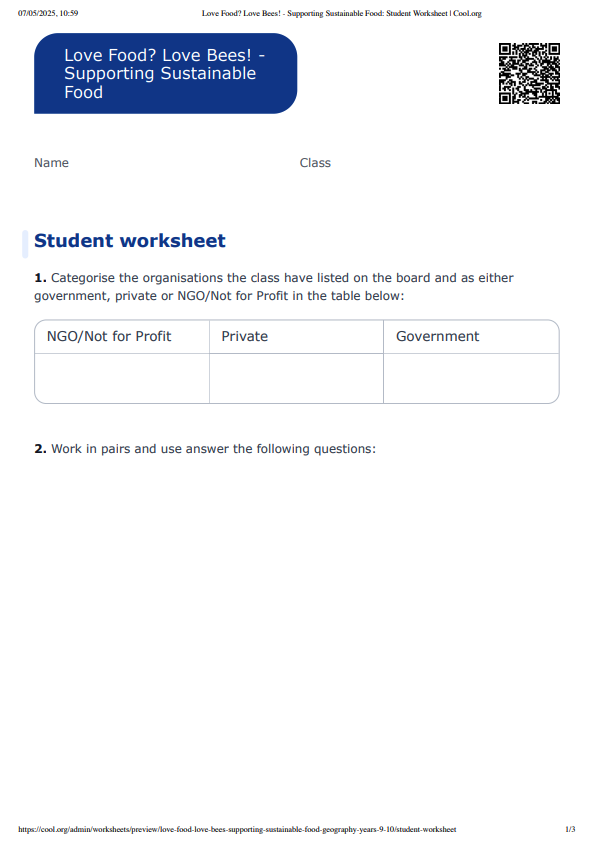
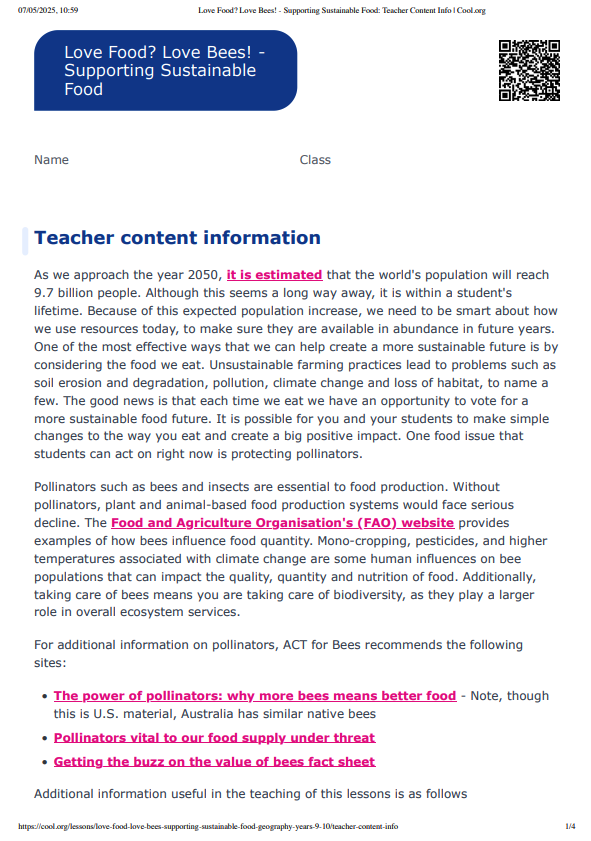
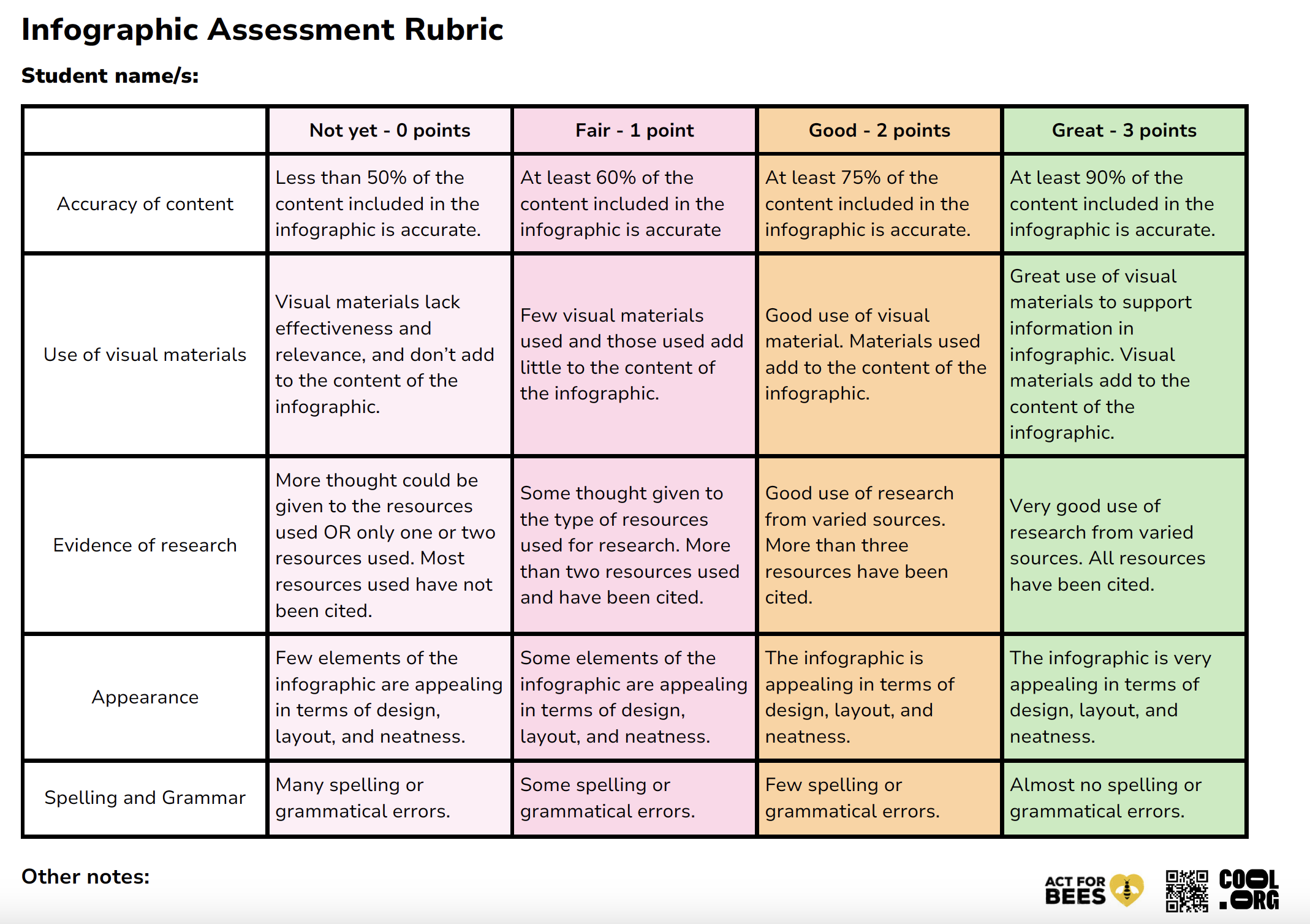
Welcome back!
Don't have an account yet?
Log in with:
Create your free Cool.org account.
Many of our resources are free, with an option to upgrade to Cool+ for premium content.
Already have an account?
Sign up with:
By signing up you accept Cool.org's Terms and Conditions(Opens in new tab) and Privacy Policy(Opens in new tab).